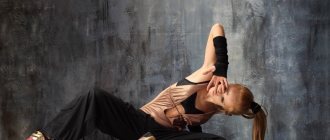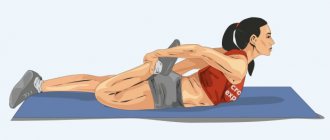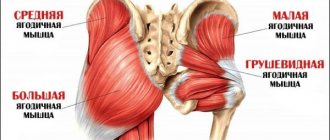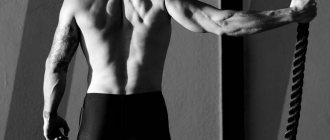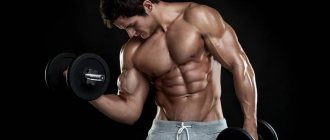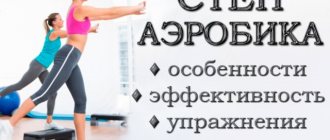Shaping is a set of gymnastic exercises that allow you to correct your figure. The main goal of such training is to get rid of extra pounds and give the body beautiful contours. In addition, shaping exercises require following a special diet. After all, only a competent combination of physical activity with an appropriate nutrition system can achieve impressive results.
A little history about shaping
Despite the foreign name, shaping is a domestic type of gymnastics. In the late 1980s, it was developed and implemented by Russian physiologist Ilya Prokhortsev, who subsequently received a patent for the new training program.
In the mid-90s, shaping became a very popular sports trend all over the world and turned into a kind of ideology. This training program consists of aerobic exercises, which are effective in the fight against extra pounds, and anaerobic exercises, which allow you to increase muscle size.
Many girls worry in vain that shaping will make their figure look like the terrifying proportions of bodybuilders. No need to worry unnecessarily! Shaping training will not allow you to gain a mountain of muscles. This technique is aimed at creating an ideal female figure. Although the standards of beauty and femininity are constantly changing, and following them, training schemes are adjusted.
By the way, the statement that shaping is an exclusively female form of physical activity is completely false. men's shaping has become known since the early 90s, but became widespread much later. This fact can be explained extremely simply. Men have much more opportunities in choosing a sports direction for the purpose of body correction. Representatives of the stronger sex often prefer bodybuilding, martial arts and team sports.
Nutrition during shaping exercises
If you are struggling with extra pounds and want to gain a toned, slender body, you cannot do without proper nutrition. However, at each stage the diet will be different.
- During the catabolic stage, during which fat tissue is eliminated, it is necessary to consume more carbohydrates. The body should be saturated with fiber, minerals, and vitamins. The diet mostly consists of vegetables, fruits and berries. Before training, you can eat some plant-based protein. On days free from classes, you can eat lean meat. It is advisable to exclude sugar and baked goods.
- At the anabolic stage, the diet changes towards proteins of animal origin. Since this substance is a building element of our muscles, such nutrition will help correct and tighten your figure. It's still a good idea to eat enough fruits, vegetables and nuts. For lunch and after training, you should eat boiled or steamed veal, rabbit, turkey, chicken breast and other lean meats. Eliminate hot seasonings and spices.
The essence of the training
Shaping is a training program that consists of sequential exercises. The system includes work in two directions:
- Catabolic. This is a set of aerobic exercises with frequent repetition. This complex effectively burns calories and promotes rapid weight loss.
- Anabolic. Performing anaerobic exercises aimed at building muscle mass.
Shaping involves conducting group classes. The trainer carefully studies the needs of the group members and, if necessary, adjusts the number of certain exercises in the training scheme.
If the participants' primary goal is to lose excess weight, it is advisable to increase the percentage of catabolic load. When the main goal is the formation of muscle definition, it is necessary to include more anaerobic exercises in the training program. But at the same time, one rule must be strictly observed: anaerobic loads should not be set in the first place. At the initial stage of training, the muscles must be thoroughly warmed up, which will enhance the effect of the exercises and avoid injury.
Each training program must include three mandatory stages:
- 5-7 minute warm-up. Which should consist of simple movements to warm up the body.
- Main part. It usually includes exercises aimed at working the muscles of the arms, chest, shoulder girdle of the back, abdominal muscles, gluteal muscles, legs and hips. About 50 minutes are allotted to complete the main stage complex.
- Mandatory cool down for 4-5 minutes. At the final stage, stretching exercises and relaxing movements are performed.
Chest and arms
Stand straight, feet wider than shoulder width, knees slightly bent. Lean your body forward slightly. Clench your fists (you can take small dumbbells or water bottles), tense your arms, bend your elbows 90° and spread them to the sides with your elbows up. From this position, move your elbows back and slightly up, squeezing your shoulder blades and extending your arms to the sides. Then move your arms forward and slightly down, crossing them in front of your chest as deeply as possible (trying to reach your elbow with your elbow). Don't slouch your back, keep your shoulders turned. Repeat 30 times.
How is shaping different from fitness?
Shaping differs significantly from other sports in the features of its training schemes. This applies not only to the order in which certain sets of exercises are performed, but also to the number of muscle groups that are involved in the work during exercise.
Shaping allows you to simultaneously use almost all muscle groups. A similar effect is achieved due to the fact that the majority of exercises consist of at least 2-3 movements and are considered basic. This approach makes it possible to distribute the load evenly. In addition, there is an active release of hormones that promote muscle growth.
The anaerobic and aerobic stages are clearly separated in shaping training schemes. This is what allows you to create an optimal program that allows you to achieve maximum efficiency.
Please note that shaping uses many exercises that must be performed while sitting or lying on the floor, which significantly reduces the load on the spine. In addition, classes take place at a fairly energetic pace under the constant supervision of an instructor.
Types of shaping
There are several types of shaping, which differ in the intensity of the given load and the types of exercises included in the complex:
- Classic (or shaping classic). Training according to this scheme involves the presence of catabolic and anabolic stages. The main goal of the classes is to form ideal body proportions and maintain the desired shape.
- Therapeutic. This training program involves relatively light loads and longer pauses between exercises. Classes according to this scheme are suitable for recovery after injury. It is also used by overweight people who want to get rid of extra pounds.
- Pro-shaping. This is the most difficult training program, involving high load and high repetitions. Only people with good physical fitness should exercise according to this scheme.
- Choreographic shaping. This program combines exercises very similar to aerobics and dancing. Regular exercises make it possible to correct your gait and straighten your posture.
- Uni-shape. This program is the optimal solution for children and teenagers. During training, minimum loads are set. Most of the exercises are aimed at developing correct posture, harmonious muscle development and increasing the body's endurance.
- Shaping for the elderly. Involves performing a special set of exercises aimed at preventing age-related pathologies.
Pros and cons of training
Let's start with the advantages:
- Shaping classes allow us to correct our physique. Work on problem areas, lose extra pounds, make muscles strong and elastic, which is especially important for the female body.
- The workouts are absolutely safe, unlike strength exercises with free weights (kettlebells, barbells). After all, power loads are unnatural for the female body.
- Shaping is suitable for women of any age. Both very young girls and older women can participate in such a program. The main task is to choose the right direction, taking into account age characteristics and level of physical fitness.
- To get rid of excess weight, classic shaping is best, which has virtually no contraindications. Therapeutic is relevant during the rehabilitation period and after illnesses. It should be done only after consulting a doctor.
Despite the many advantages, shaping also has its disadvantages:
- In a situation where the goal of training is to build muscle mass, shaping is not suitable.
- Classes involve changing the nutrition system. This is the only way to achieve the greatest efficiency.
- You need to do shaping regularly. A couple of workouts a month depending on your mood will not give the desired result. The optimal number of classes is 2-3 times a week.
- Some types of shaping are not suitable for everyone. Before you start exercising, you should consult with your doctor and find out if there are any contraindications to training.
Types of program
At first, shaping classes had only one goal - to increase the attractiveness of the female body. However, after several years, the system was improved, modern directions were developed, as well as approaches to training:
- Shaping classic (see picture). It is considered a basic set of classes that are focused on correcting all parts of the body, as well as improving the physique.
- For those over 50. It is more of a preventive nature, allowing older women to maintain a slim and beautiful figure.
- Uni system. The program is aimed at children and adolescents and contains gentle comprehensive training. This includes exercises to improve posture, uniform development of muscle tissue, and also to increase endurance.
- Shaping style. One of the newest trends that allows you to create an elegant appearance.
- Shaping therapy. The exercises are designed for patients who need rehabilitation and recovery after injury, as well as those who have chronic diseases or other health problems. The effectiveness of the program has been proven for people diagnosed with obesity, scoliosis or osteochondrosis. The load on the muscles is not too strong and quite gentle, with long rest intervals between each lesson.
- Shaping choreography. This model combines some elements of dance and aerobics, which allows you to get an even posture and a beautiful gait.
In addition, there are dozens of other subcategories in shaping that are used at home. Here are some of them:
- class 1 (figure correction and strengthening of underused muscles);
- class 2 (working out the main muscle groups, the exercise is performed to music, either domestic or foreign);
- class 3 (training is aimed at strengthening and developing the pectoral muscles);
- class 4 (working the thighs, buttocks and abdomen);
- class 5 (complex exercises aimed at hard-to-work muscle tissue, as well as respiratory and cardiac activity);
- class 6 (combines elements of step aerobics, corrects the back of the thigh);
- class 7 (weight loss exercises);
- class 8 (training begins with a warm-up, followed by aerobics, strength training and stretching).
The system also has classes 9, 10, 11, 12 and 13. All these subcategories of the program help not only strengthen the muscles of the body, but also improve the general condition of the body. Trainings are held three times a week.
It is worth noting that some fitness clubs with a swimming pool offer clients hydroshaping (water), which can be either the main or an additional part of the classes.
Varieties of shaping are aimed not at following strict diets and training until you drop, but at normalizing your spiritual and physical condition.
Contraindications to training
Shaping is considered the most effective program for body correction. Despite the fact that it is suitable for almost everyone without restrictions on age and level of physical fitness, there are several contraindications that need to be taken into account. Shaping cannot be done:
- people with heart and vascular diseases;
- for hypertension, respiratory pathologies;
- exacerbation of inflammatory processes in the body;
- visual impairment, regular dizziness, general weakness of the body;
- during pregnancy and lactation;
- with the onset of the menstrual cycle.

